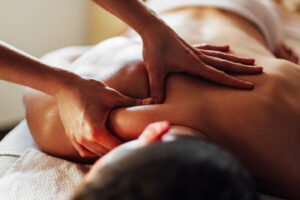Maps Liftoff Reviews is an online course that promises to help you generate local leads. Its promoter, Brian Willie, claims that his system can help you conquer your local competition and create much money.
Brian is a local marketing expert who has ranked tons of Google Maps listings and trained thousands. He offers a comprehensive training platform that includes tips and tricks, complete guides on Google’s latest updates, and case studies of successful students.

Maps Liftoff is an online course that teaches business owners how to rank their Google Maps pack listings. It claims to help them generate more leads and outshine their local competitors. However, many people question the legitimacy of this program. Some have even reported that it is a scam. Others have complained that the program does not provide all the information it promises.
Brian Willie, the creator of Maps Liftoff, is a professional marketing consultant. He has helped numerous businesses boost their profits by using SEO. His expertise has led him to develop a training program that will take making money online to a whole new level. The program will teach you how to rank your GMB listings and attract high-paying clients.
A well-optimized Google My Business (GMB) listing is one of the most important ranking factors for a local SEO campaign. Without it, you can lose significant visibility and revenue. This is especially true for home services and lead gen sites. It is not uncommon for companies to miss out on tens of thousands of dollars in revenue because their GMB listing is not optimized.
As an experienced local marketing expert, Brian Willie has ranked tons of maps listings and trained tens of thousands of students on how to rank their Google map listings. He also has a passion for helping others to achieve their dreams. To this end, he has developed an online training program called “Maps LiftOff Agency Black.” The program will help you get your Google maps listings ranked quickly and will help you dominate your niche.
In addition to its comprehensive Maps Pack Training Guide, Maps Liftoff also offers several private consultation sessions with Brian Willie. These 30-minute sessions are designed to give you the tools to make your own successful Google 3-pack ranking campaigns. However, it is important to note that these sessions are only available for a limited time. As a result, it is best to combine these private coaching sessions with other SEO strategies to maximize your results.
Maps liftoff is an online training program that teaches business owners how to rank their Google maps listings. It has a comprehensive training guide, proven strategies and case studies from successful students. Brian Willie, a local marketing expert with more than 80 producing local websites, is the creator of this course. The course is a must-have for any business that wants to conquer their local competition and generate enough leads to produce satisfying commissions.
While SEO is a powerful strategy for ranking your site, it’s no longer enough to boost your profits. Google’s constant algorithm updates require new methods of boosting your revenue. The Maps pack is one of the most effective ways to rank your website, and it’s easy to implement with this simple course.
The Maps liftoff training is a powerful tool that will help your local business dominate the competition and increase sales. It focuses on optimizing your GMB, or Google My Business, listing. This is an essential part of your local SEO campaign, and a well-optimized GMB will ensure that you rank in the Google 3-pack.
While some people may consider the training to be a scam, it’s not. It’s an excellent way to learn about the Google 3-pack, and it provides you with valuable skills that will help you succeed in your business. The only drawback is that the training is only available for a limited time.
Maps liftoff has a lot to offer, but there are some things that you should keep in mind before signing up. First, make sure to read the terms of service and privacy policy. Also, be sure to check out the user reviews before making a purchase. Some of the negative reviews may be misleading, so it’s best to research the product before deciding whether or not it’s for you.
It’s important to understand the difference between this game and velocidrone. While velocidrone has more realistic physics, it’s harder to fly in certain environments. Liftoff has better graphics and a more immersive experience, but it doesn’t have as many options as velocidrone.
A good deal can be found in the Maps liftoff program, a training course that promises to teach business owners how to rank their Google maps listings and attract high-paying clients. The program was created by local marketing expert Brian Willie, who has a long track record of helping business owners grow their revenue and profits online.
The program claims to have helped businesses generate new leads and outperform their local competition. It offers a comprehensive Map Pack training guide, proven strategies, and case studies of successful students. It also provides training for implementing Google My Business (GMB) to get more traffic and make more money.
Its founder, Brian Willie, has ranked tons of maps listings and trained tens of thousands of people over the years. He says that his passion for conquering Google Maps listings drove him to develop Maps liftoff. The program will take your online revenue to a whole new level and help you grow your business quickly.
In addition to being a great deal, the program is simple and easy to use. It will help you rank your website and attract customers to it so that you can focus on running your business and serving your customers. You’ll be able to build an income stream that brings in consistent revenues every month without having to spend hours a day chasing and selling.
The only thing that I would change in this program is the way that the physics are handled. It feels goofy in liftoff, especially when flying in constrained areas. Velocidrone handles it much better, and the world scale is much truer in that game.
Brian Willie is a well-known local SEO expert who has helped many small businesses increase their revenue. He has used his expertise to rank GMB listings for a variety of industries, including real estate, home services, and even law firms. His system is a great value and will give you the tools you need to dominate your local market. He has a proven track record of providing results for his clients and will continue to do so as he grows his company.
Brian Willie is a professional local marketing expert who has made a name for himself in the industry. He knows that traffic to a website and conversions are the most important factors in generating revenue online. He also knows that GMB is a powerful tool to boost a business’s visibility in the search engine results. That is why he has created Maps Liftoff, an online training program that teaches you how to optimize your Google My Business listing to rank higher in the local 3-pack. This way, you can generate more leads and outshine your local competitors. The course comes with a “3-pack Ranking Webclass” and a “Pack Mass Case Study,” as well as other resources that can help you improve your rankings in the Google search engine results.
The program claims to be the best solution for local businesses looking to increase their revenue. Its method is easy and affordable, and it can even outrank larger companies in the local search results. Additionally, it provides valuable marketing knowledge that will help you grow your small business in the community.
This method is different from traditional SEO, which focuses on keywords and links. The advantage of this method is that it can be used to rank both mobile and desktop sites. Moreover, it is not limited to local searches, which can be an effective strategy for any business.
While Maps Liftoff is not a scam, it’s not our first choice. Digital Real Estate has supercharged the lead generation model, and we’re just not impressed by the overall quality of the product. However, it’s still a decent option for those who want to start making money online.




